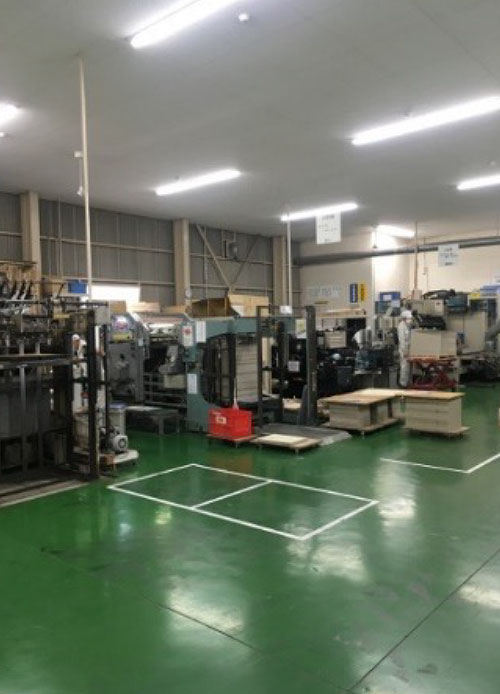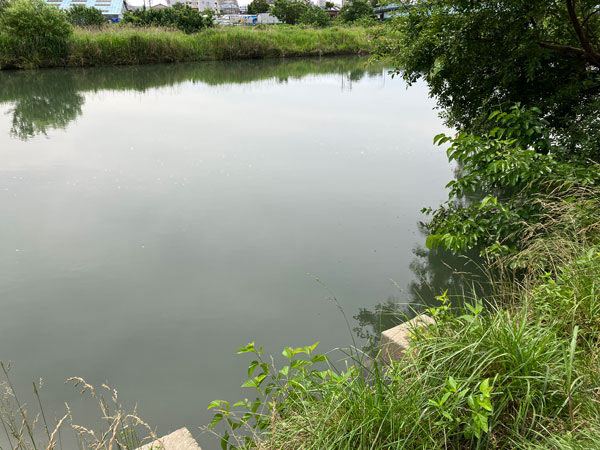Efforts in manufacturing
KOSÉ makes continuous efforts to care for the global environment in various aspects of its production activities, including the implementation of measures to reduce industrial waste and energy consumption to mitigate global warming and prevent environmental pollution.
Environmental Management in Production
KOSÉ’s Production department is mindful of its effects on the environment. In 2000, the Gunma factory has obtained an ISO1400 certification, followed by the Sayama factory and other affiliated factory in 2002 and 2003 respectively. Transfer to the revised ISO1400, enacted on September 2015, is currently in progress. Both the Business Management and Production departments are pushing for further improvement toward the conservation of energy.
KOSÉ Group Factories Certified with ISO14001
Certificate of Registration(Date of certification : January 28th, 2003)- Sayama Office, KOSÉ Corporation
- Gunma Office, KOSÉ Corporation
- Gunma Factory, KOSÉ Industries Co., Ltd.
- Sayama Factory, KOSÉ Industries Co., Ltd.
- Advance Co., Ltd.
Promotion of recycling

KOSÉ’s manufacturing sites place emphasis on recycling with the aim of using recycled materials for the benefit of society, rather than simply disposing of generated waste. The greatest efforts are focused on material recycling, combined with chemical and thermal recycling, to minimize landfill waste and simple disposal. Based on this basic policy, each worksite is required to sort out waste into recyclable or non-recyclable prior to collection to improve the recycling rate and reduce industrial waste. We regularly review recycling companies and visit waste treatment firms for on-site inspection to ensure proper waste treatment.
*
Material recycling:Materials are recycled back to their original forms. (e.g., from
plastic to plastic, from paper to paper)
Chemical recycling:Materials are recycled and chemically changed into something different from their original forms for use.
Thermal recycling:Materials are recycled to be used for heat generation.
-

1. Used paper is collected and processed into material used to manufacture protective boxes.
-

2. Protective boxes are finished by the factory’s box-making group.
-

3. Protective boxes made from 100% recycled paper and crafted with wisdom and enthusiasm.
Efforts Toward Reducing Environmental Footprint
In 2011, we have implemented a cogeneration system in the Gunma Factory to improve the energy consumption efficiency. We are mitigating the impact on the environment by internally generating power with natural gas as well as utilizing the waste heat from the generator to product manufacturing. Since the peak consumption of electricity in the factory comes from the air conditionings during summer, we are suppressing the rise of room temperature by implementing light shielding net on the windows.
The Gunma Factory switched all purchased electricity to renewable energy in January 2021, and so did the Sayama Factory in February 2023. This is equivalent to approximately 32% of the greenhouse gas emissions from energy and purchased electricity at all sites of the KOSÉ Group compared with FY2018.
We are also promoting the visualization of electricity so that we can monitor the power consumption of major facilities and promote more efficient operations.
-

Cogeneration system utilizing natural gas
-

Light shielding net
The large-scale air handling unit (AHU) in the new Gunma Factory building is designed to conserve energy by controlling operations while optimizing temperature control and air circulation, which are critical to maintaining the production environment.

Large-scale air handling unit (AHU)
- [Specific Efforts]
- 1) Large-scale AHU shutdown when the factory is not in operation
- 2) Output control of compressors
- 3) Speed control and winter shutdown of pumps for cold and hot water for air conditioning
- 4) Setting the air conditioning off timer by area
Large-scale air handling unit (AHU)
<Actual Reduction of Power Consumption>
- 2020 Average
569,723Kwh -
 19.7%
19.7%
Reduction - 2021 Average
457,260Kwh -
 8.2%
8.2%
Reduction - 2022 Average
416,635Kwh -
 2.9%
2.9%
Reduction - 2023 Average
404,607Kwh
Environmental Conservation Activities in the Area Surrounding the Factory
As a factory that manufactures cosmetics, we have been participating and cooperating in a nationwide survey of the water environment executed by the “National Water Environment Map Executive Committee” since 2023, regardless of the water used for manufacturing, in order to investigate the status of the water environment and resources in the neighborhood and to contribute to environmental conservation in the region.
The results of this survey are published as the “Nationwide Survey of the Water Environment Around Us.” https://www.japan-mizumap.org/
(Survey sites) Sayama Factory - Iruma River and Furo River; Gunma Factory - Hirose River and Kasugawa River; Minami-Alps Factory (tentative name): Midaigawa River
For the Global Environment
Top
Environmental Indicators
Initiatives to Address Climate Change
Low-Carbon Transition Plan
Measures for Circular Economy
Efforts related to products
Efforts in manufacturing
Efforts at offices, logistics operations, and shops
Overall data on environmental impact

